Product concept design: Creative product design & prototyping
Turning good ideas into great products
We have many years’ experience of taking ideas and turning them into realistic, workable and marketable designs. One of the key aspects of the new product design process is looking at an idea from different perspectives. We need to make sure we have considered every potential execution, otherwise the wrong idea may be chased down the development path. To do this we brainstorm as many creative alternative solutions as possible before viewing each through the eyes of the consumer. As designers, we focus not only on answering the brief but also providing an element of novelty or unique functionality that suits the target market and sets a product apart from its competition. We call this adding the ‘bang’ – that little something that turns a good product into a great one and makes it stand out in the marketplace.
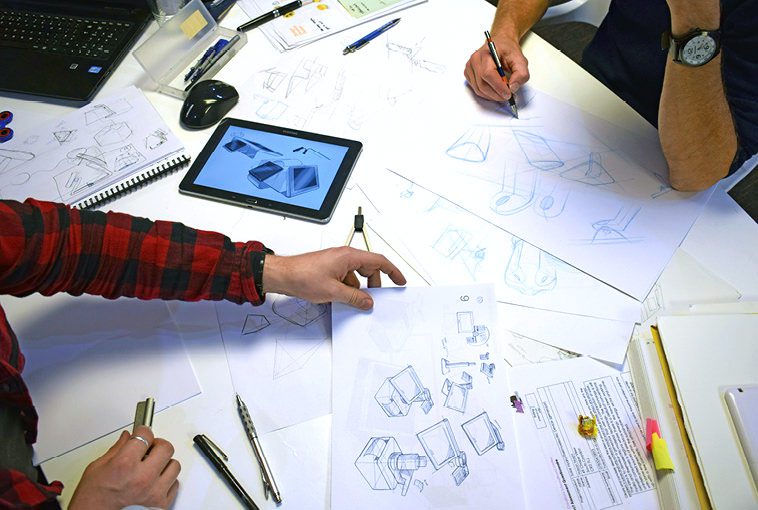
Creative product design
Concept generation is one of the most exciting activities of designing as it is a very creative and interactive process. Once the brief is fully evaluated, we get together as a team and focus on “what is the unique selling feature and who is the target market?” . This allows us to create as many different solutions as possible without inhibiting our ideas with cost or manufacturing constraints. We strive to make the design solutions as diverse as possible and ask of each design if is it answering the brief and will our target customer understand it and want to use it. This process of stretching the ideas as wide as possible often leads to inventive and innovative solutions.
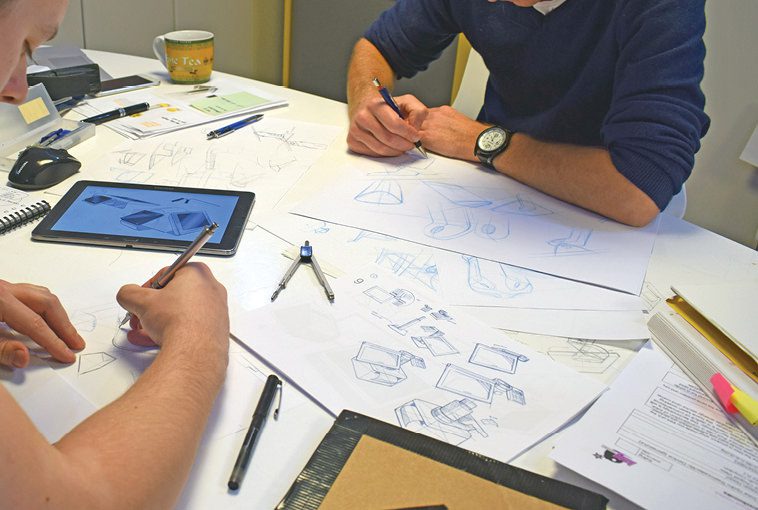
Design thinking
Our clients are long term partners, so we are not only looking to solve the immediate brief but look ahead and applying design thinking to their business and future product development plans. The concepts we have generated will all vary considerably. Using Victor Papanek’s - bisociation charts, we categorise the concepts into :- • Now - act on immediately • 2-5 years - a concept not quite ready for immediate production • 5-10 years - an answer leading to long range product or system planning • R and D - an idea that sounds reasonable but requires R and D • Other - an answer that does not solve the immediate problem but may be of use for another project • Gimmicks - an idea generated that has nothing to do with the products itself but delivers a new merchandising gimmick
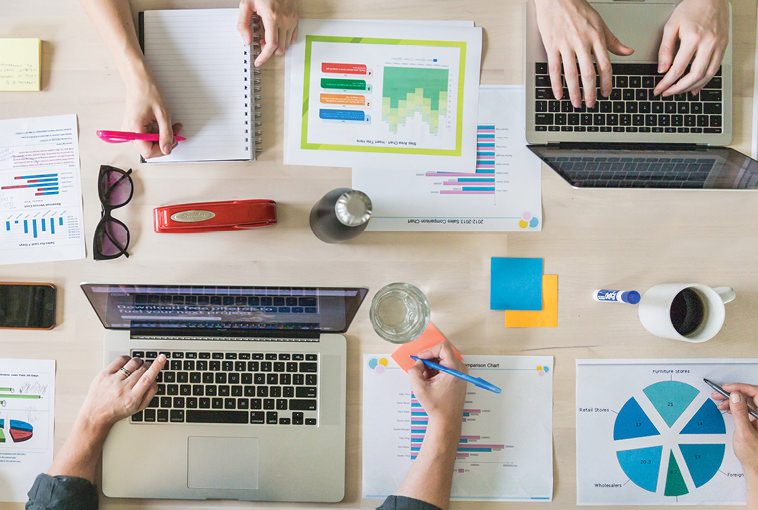
User-centred design
User or human-centred design, is the practice of designing a product or experience to an individual. It can be summarised by the following process which applied to the whole product design process:
- Inspiration: In this phase users are observed, understanding their needs and requirements around an existing or similar task into which your product will be designed for. Observations will be made and noted for the next stages.
- Ideation: Next we make sense of all the information we gathered. Generating tons of ideas and identifying opportunities for design. We will also test and refine our solutions.
- Implementation: This is where we bring the solution to life with a prototype, we'll get a target user to experience it while we observe their interactions. Taking these notes forward we go back into development to create a truely superior design.
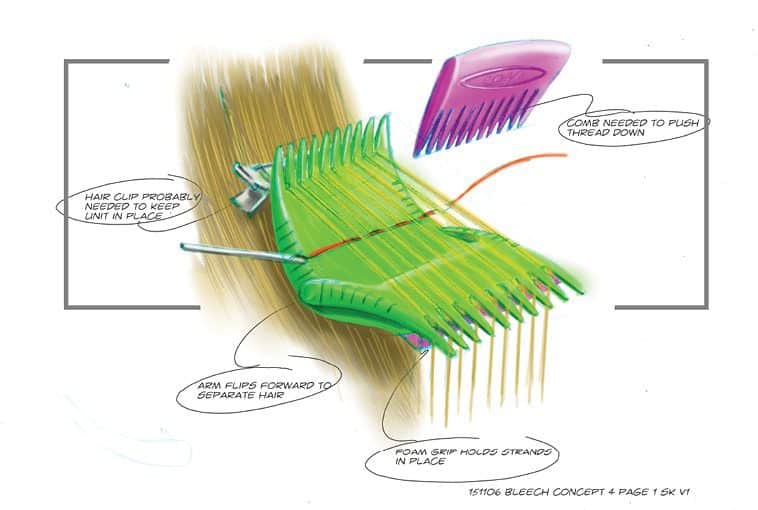
Concept optimisation
The “4 hows” of our evaluation process are then overlaid on each of the chosen concepts. This challenges us to consider how to make it for the target cost? How to manufacture it? How to make the USP stand out? How the user will interact with it and how the design can help the product in the market and all those in the supply chain that deliver it?
Sometimes our chosen concepts move out to become future projects as they will need R and D or future planning, but the desired result is delivered in a concept pack. This is a pack of illustrations and often 3D block models which illustrates what the final product will look like, how it will function, and why it is unique.
Product concept design: Creative product design & prototyping
Turning good ideas into great products
We have many years’ experience of taking ideas and turning them into realistic, workable and marketable designs. One of the key aspects of the new product design process is looking at an idea from different perspectives. We need to make sure we have considered every potential execution, otherwise the wrong idea may be chased down the development path.
To do this we brainstorm as many creative alternative solutions as possible before viewing each through the eyes of the consumer. As designers, we focus not only on answering the brief but also providing an element of novelty or unique functionality that suits the target market and sets a product apart from its competition. We call this adding the ‘bang’ – that little something that turns a good product into a great one and makes it stand out in the marketplace.
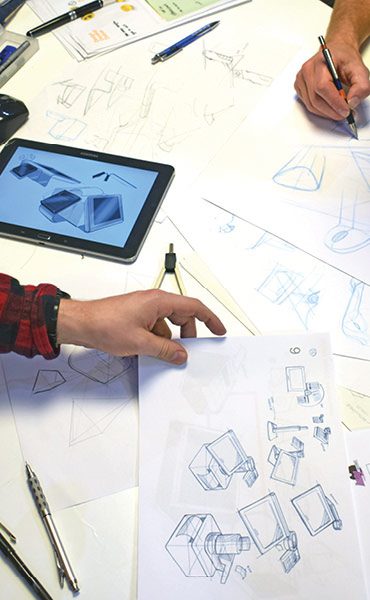
Creative product design
Concept generation is one of the most exciting activities of designing as it is a very creative and interactive process. Once the brief is fully evaluated, we get together as a team and focus on “what is the unique selling feature and who is the target market?” . This allows us to create as many different solutions as possible without inhibiting our ideas with cost or manufacturing constraints. We strive to make the design solutions as diverse as possible and ask of each design if is it answering the brief and will our target customer understand it and want to use it. This process of stretching the ideas as wide as possible often leads to inventive and innovative solutions.
Design thinking
Our clients are long term partners, so we are not only looking to solve the immediate brief but look ahead and applying design thinking to their business and future product development plans. The concepts we have generated will all vary considerably. Using Victor Papanek’s - bisociation charts, we categorise the concepts into :- • Now - act on immediately • 2-5 years - a concept not quite ready for immediate production • 5-10 years - an answer leading to long range product or system planning • R and D - an idea that sounds reasonable but requires R and D • Other - an answer that does not solve the immediate problem but may be of use for another project • Gimmicks - an idea generated that has nothing to do with the products itself but delivers a new merchandising gimmick
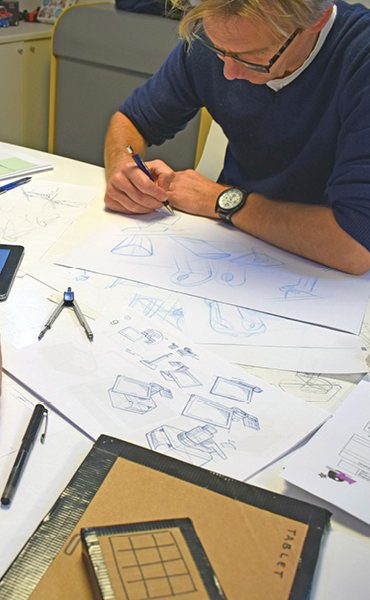
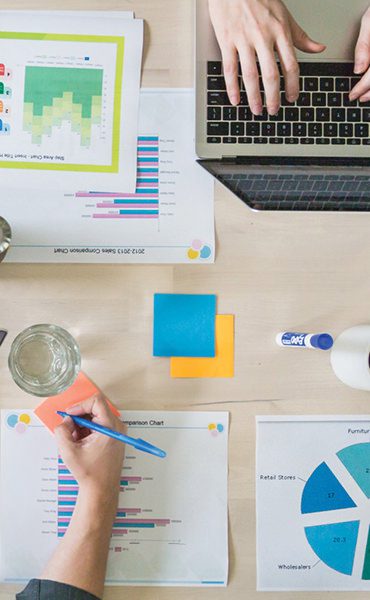
User-centred design
User or human-centred design, is the practice of designing a product or experience to an individual. It can be summarised by the following process which applied to the whole product design process:
- Inspiration: In this phase users are observed, understanding their needs and requirements around an existing or similar task into which your product will be designed for. Observations will be made and noted for the next stages.
- Ideation: Next we make sense of all the information we gathered. Generating tons of ideas and identifying opportunities for design. We will also test and refine our solutions.
- Implementation: This is where we bring the solution to life with a prototype, we'll get a target user to experience it while we observe their interactions. Taking these notes forward we go back into development to create a truely superior design.
Concept optimisation
The “4 hows” of our evaluation process are then overlaid on each of the chosen concepts. This challenges us to consider how to make it for the target cost? How to manufacture it? How to make the USP stand out? How the user will interact with it and how the design can help the product in the market and all those in the supply chain that deliver it?
Sometimes our chosen concepts move out to become future projects as they will need R and D or future planning, but the desired result is delivered in a concept pack. This is a pack of illustrations and often 3D block models which illustrates what the final product will look like, how it will function, and why it is unique.
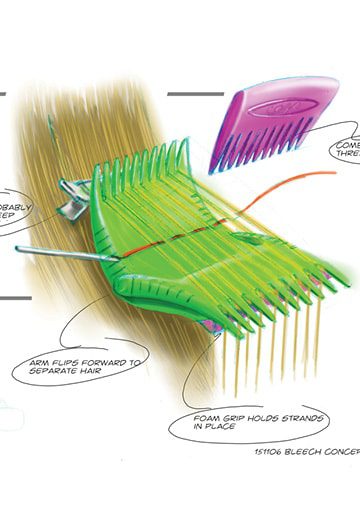
Product concept design: Creative product design & prototyping
Turning good ideas into great products
We have many years’ experience of taking ideas and turning them into realistic, workable and marketable designs. One of the key aspects of the new product design process is looking at an idea from different perspectives. We need to make sure we have considered every potential execution, otherwise the wrong idea may be chased down the development path.
To do this we brainstorm as many creative alternative solutions as possible before viewing each through the eyes of the consumer. As designers, we focus not only on answering the brief but also providing an element of novelty or unique functionality that suits the target market and sets a product apart from its competition. We call this adding the ‘bang’ – that little something that turns a good product into a great one and makes it stand out in the marketplace.

Creative product design
Concept generation is one of the most exciting activities of designing as it is a very creative and interactive process. Once the brief is fully evaluated, we get together as a team and focus on “what is the unique selling feature and who is the target market?” . This allows us to create as many different solutions as possible without inhibiting our ideas with cost or manufacturing constraints. We strive to make the design solutions as diverse as possible and ask of each design if is it answering the brief and will our target customer understand it and want to use it. This process of stretching the ideas as wide as possible often leads to inventive and innovative solutions.
Design thinking
Our clients are long term partners, so we are not only looking to solve the immediate brief but look ahead and applying design thinking to their business and future product development plans. The concepts we have generated will all vary considerably. Using Victor Papanek’s - bisociation charts, we categorise the concepts into :- • Now - act on immediately • 2-5 years - a concept not quite ready for immediate production • 5-10 years - an answer leading to long range product or system planning • R and D - an idea that sounds reasonable but requires R and D • Other - an answer that does not solve the immediate problem but may be of use for another project • Gimmicks - an idea generated that has nothing to do with the products itself but delivers a new merchandising gimmick


User-centred design
User or human-centred design, is the practice of designing a product or experience to an individual. It can be summarised by the following process which applied to the whole product design process:
- Inspiration: In this phase users are observed, understanding their needs and requirements around an existing or similar task into which your product will be designed for. Observations will be made and noted for the next stages.
- Ideation: Next we make sense of all the information we gathered. Generating tons of ideas and identifying opportunities for design. We will also test and refine our solutions.
- Implementation: This is where we bring the solution to life with a prototype, we'll get a target user to experience it while we observe their interactions. Taking these notes forward we go back into development to create a truely superior design.
Concept optimisation
The “4 hows” of our evaluation process are then overlaid on each of the chosen concepts. This challenges us to consider how to make it for the target cost? How to manufacture it? How to make the USP stand out? How the user will interact with it and how the design can help the product in the market and all those in the supply chain that deliver it?
Sometimes our chosen concepts move out to become future projects as they will need R and D or future planning, but the desired result is delivered in a concept pack. This is a pack of illustrations and often 3D block models which illustrates what the final product will look like, how it will function, and why it is unique.




